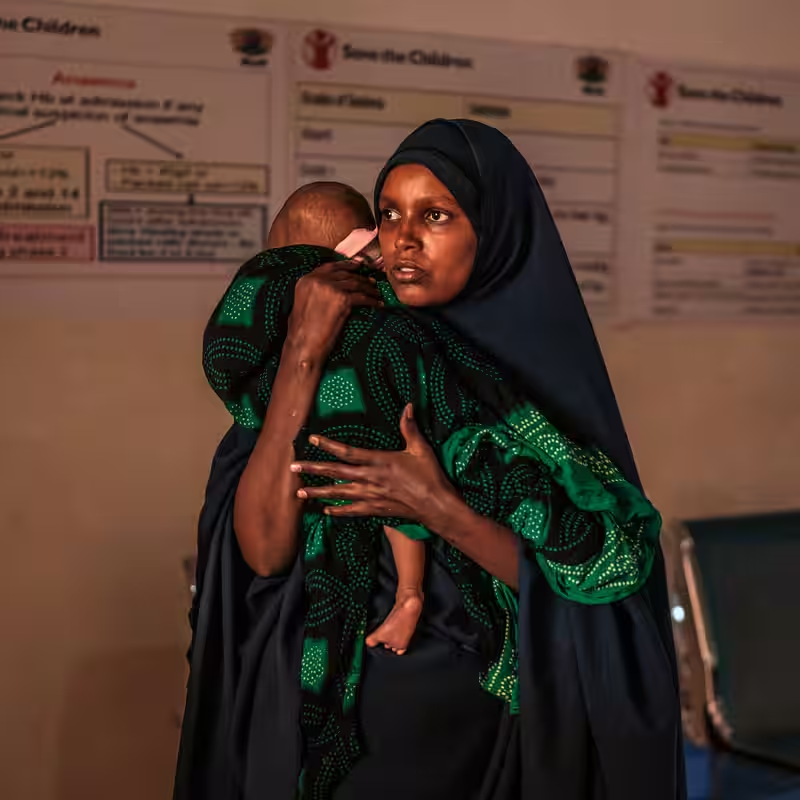U.S. Aid Cuts Worsen Somalia’s Child Health Crisis—Malnutrition Soars
In a heartbreaking turn for one of the world’s most vulnerable populations, Somalia’s health system is teetering on the brink—largely due to steep reductions in U.S. foreign aid. With American assistance slashed by more than half in recent months, clinics are closing, vaccines are running out, and child malnutrition rates have spiked to alarming levels.
The consequences are stark: children who once received life-saving therapeutic food now lie listless in overcrowded wards, their ribs visible beneath paper-thin skin. Health workers, already stretched thin, describe scenes of desperation that echo past famines—but this time, they say, the crisis was preventable.
How U.S. Aid Cuts Triggered a Health Collapse
For years, the United States—primarily through USAID—was a cornerstone of Somalia’s humanitarian response, funding nutrition programs, maternal care, and disease surveillance. But in early 2025, citing budget reallocations and shifting foreign policy priorities, the Biden administration significantly reduced aid disbursements to the Horn of Africa nation .
According to internal UN reports obtained by The New York Times, U.S. funding for Somalia’s health and nutrition programs dropped by 62% between January and September 2025. The ripple effects were immediate.
By the Numbers: Somalia’s Deepening Emergency
| Indicator | Pre-Cut (2024) | Post-Cut (2025) | Change |
|---|---|---|---|
| Severely malnourished children under 5 | 180,000 | 310,000 | +72% |
| Functioning rural health clinics (USAID-supported) | 210 | 85 | -59% |
| Measles vaccination coverage | 78% | 52% | -26% |
| Therapeutic food stockouts | 12% of districts | 68% of districts | +467% |
Voices from the Ground
Dr. Amina Hassan, a pediatrician in Baidoa, described the situation as “a slow-motion catastrophe.” She recalled treating three children last week who arrived too late—“Their bodies had already shut down. We had no milk, no IV fluids, no staff. All because the trucks stopped coming.”
Local aid workers say U.S. cuts forced international NGOs to scale back or exit entirely. “We used to run mobile clinics across three regions,” said Farah Mohamud, a logistics coordinator for a Somali health NGO. “Now we’re rationing supplies in one district. Children are dying not from war—but from paperwork in Washington.”
Why Did the U.S. Pull Back?
While the State Department has not issued a detailed public explanation, officials privately cite concerns over aid diversion and a strategic pivot toward “more sustainable development models.” Yet critics argue that in a country where 80% of health services rely on external donors, abrupt cuts amount to abandonment .
“This isn’t about efficiency—it’s about lives,” said Sarah Thompson, a former USAID advisor. “You can’t ‘transition’ a child out of starvation.”
What’s Next for Somalia?
Humanitarian agencies are scrambling to fill the gap, appealing for emergency funds from the EU, Gulf states, and private donors. But without U.S. leadership—and funding—the outlook remains grim. The World Health Organization warns that without immediate intervention, child mortality could double by early 2026.
For now, mothers like Halima Yusuf, cradling her emaciated 18-month-old in a Mogadishu clinic, have no answers—only hope. “I walked 40 kilometers,” she whispered. “Will someone please see us?”




